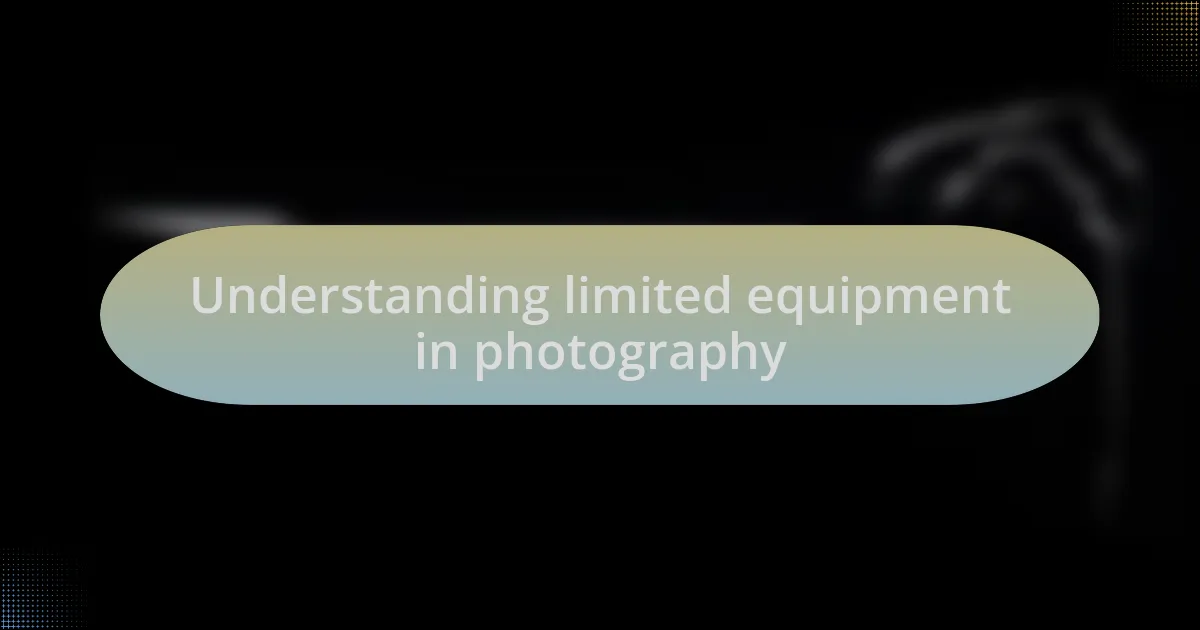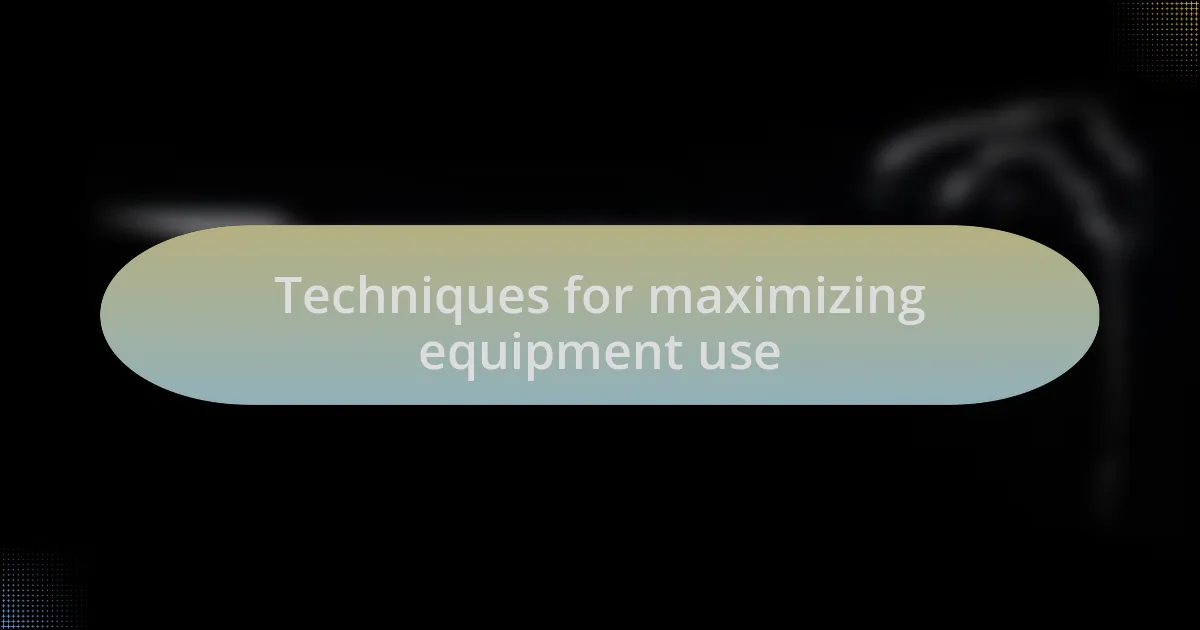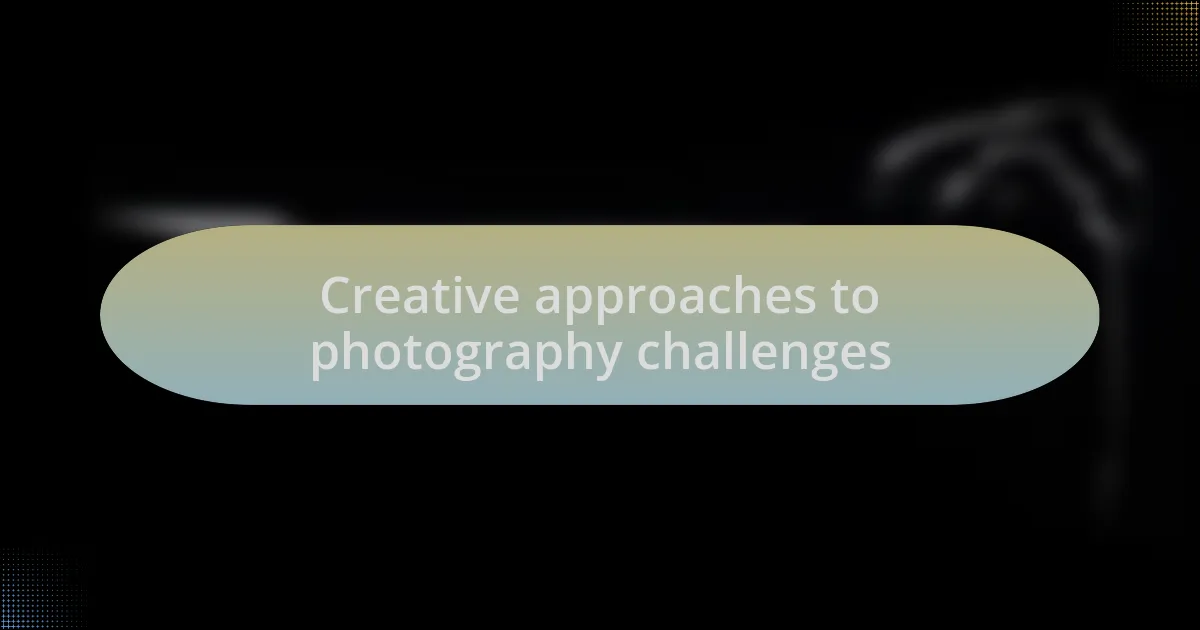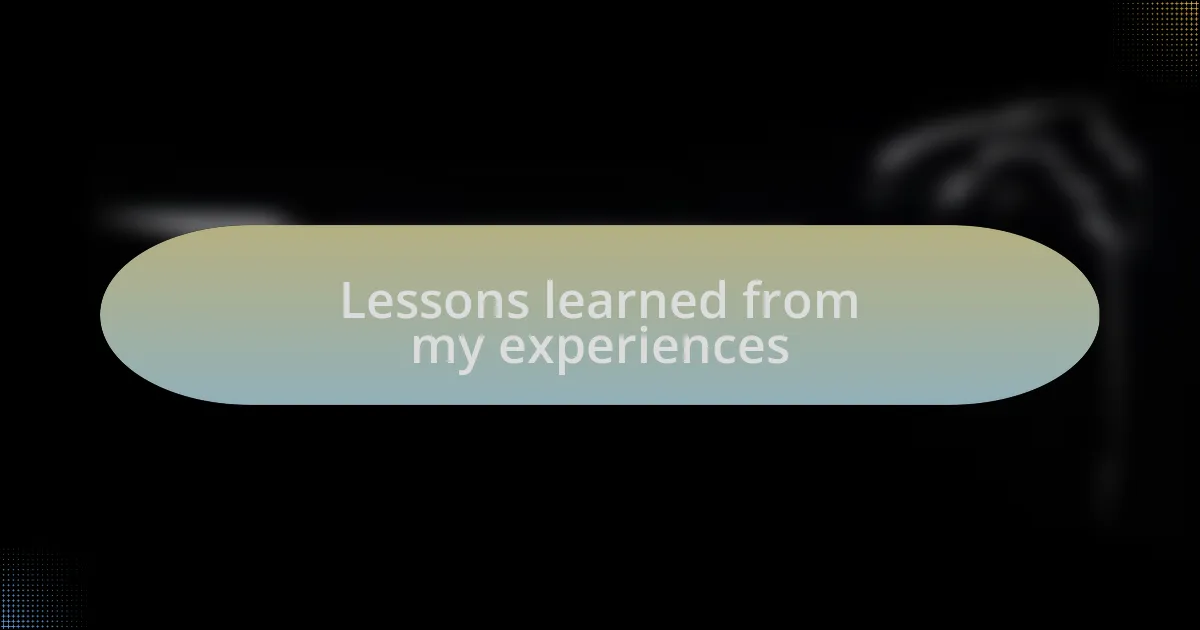Key takeaways:
- Limited equipment encourages creativity and fosters a deeper understanding of composition and storytelling in photography.
- Utilizing natural light and creative framing enhances the impact of images captured with basic gear.
- Patience and perspective can lead to unique and compelling photographs, often revealing moments that might otherwise be missed.
- Collaboration with other photographers can inspire new techniques and broaden one’s approach to using limited equipment.

Understanding limited equipment in photography
Limited equipment in photography often forces us to think creatively. I remember a time when I was caught in a situation with just my smartphone and a tiny tripod during a family gathering. Instead of feeling frustrated, I challenged myself to capture the atmosphere, focusing on angles and lighting that I might have overlooked with my usual camera gear.
It’s fascinating how constraints can lead to unexpected breakthroughs. When I first began experimenting with limited lenses, I found myself paying closer attention to composition and subject matter. Have you ever noticed how some of your best shots come when you’re not reliant on expensive gear? Those moments can teach you valuable lessons about the essence of photography: framing a story rather than just snapping a picture.
While it may seem daunting to work with fewer resources, the experience can fundamentally reshape our approach. I once attended a workshop where photographers were given the most basic cameras—some even with manual settings! Watching my peers adapt inspired me to embrace imperfections and focus on my unique perspective. In the end, isn’t photography about connection and storytelling rather than the tools we use?

Techniques for maximizing equipment use
To maximize the use of limited equipment, I urge photographers to invest time in understanding their gear’s capabilities intimately. During my early days, I often overlooked the settings that could enhance my images. It wasn’t until I spent an afternoon playing with exposure settings on my basic camera that I discovered how a small adjustment could transform a dull scene into something vibrant and full of life.
Another technique that has served me well is utilizing natural light to my advantage. I vividly recall a cloudy day when I was photographing a local park. Rather than waiting for the sun to emerge, I embraced the soft, diffused light, which added a unique mood to my shots. Have you ever experimented with different times of day? It’s incredible how the same scene can tell diverse stories depending on the lighting.
Additionally, I found that creative framing can make a significant difference. One day, while shooting with only a prime lens, I challenged myself to think outside the box. Instead of focusing solely on the main subject, I incorporated elements from the environment, like interesting textures or surrounding plants. This not only enriched my composition but also sparked a deeper connection to the scene. Have you tried this approach? You might be amazed at what you can capture by shifting your perspective.

Creative approaches to photography challenges
When faced with limited equipment, I found that storytelling becomes even more essential in my photography. I remember a time when my only camera lens was a kit lens, yet I focused on the narrative behind my subjects. Capturing genuine emotions and candid moments often led to more compelling images than any fancy gear could provide. Have you ever noticed how the story behind a photo can resonate more than its technical perfection?
Adapting to my surroundings also opened up fresh opportunities. There was a day at a local market when I had just my smartphone on hand. Instead of shying away from the challenge, I got creative with angles and reflections, using nearby surfaces to add depth. This experience taught me that sometimes the limitations can drive us to explore uncharted territories. How have you turned restrictions into sources of inspiration in your photography journey?
Finally, I’ve learned that embracing post-processing can dramatically elevate the results from limited gear. After a session with subpar lighting, I spent time editing to enhance colors and contrast, transforming seemingly bland shots into striking visuals. The editing phase became an exciting part of my creative process, as it allowed me to put my unique stamp on each image. Have you experimented with various editing techniques? You might be pleasantly surprised by what you can achieve!

Lessons learned from my experiences
One significant lesson I learned is the importance of patience. I vividly remember a quiet morning when I set out to photograph wildlife with just my basic DSLR and a single zoom lens. Hours went by without any notable shots. It was frustrating, but I soon realized that stillness invited unexpected moments. Just as I was about to leave, a fox strolled into my frame, and that one fleeting moment made my entire trip worthwhile. How often do we rush our photography, only to miss the magic that lies in waiting?
Another lesson revolves around the power of perspective. During a community event, my setup was limited, but I switched my perspective by climbing onto a scaffold to capture the bustling crowd from above. This shift not only highlighted the energy of the scene but also taught me that sometimes the best compositions come from seeing things differently. Have you ever tried capturing a scene from an unconventional angle? You might find that fresh viewpoints can lead to stunning results.
Additionally, I discovered that collaboration can enhance creativity. I once joined a photography group where we shared our varying equipment and techniques. Working with others inspired new ideas and encouraged me to see my limited gear in a new light. For instance, I learned how to use basic reflectors to manipulate natural light creatively. Have you considered how creating with others can spark new inspiration? It’s a powerful reminder that a supportive community can elevate our craft.